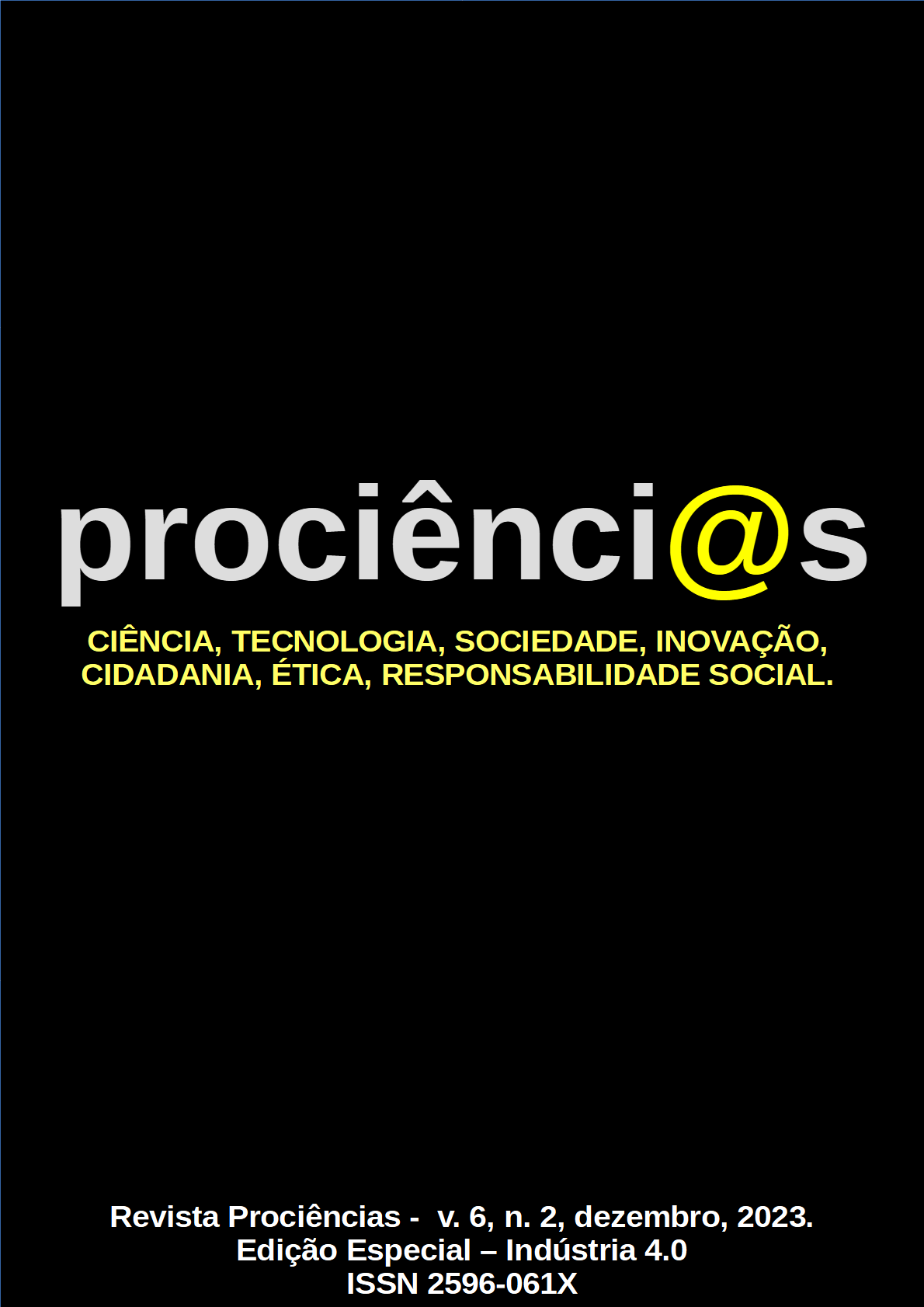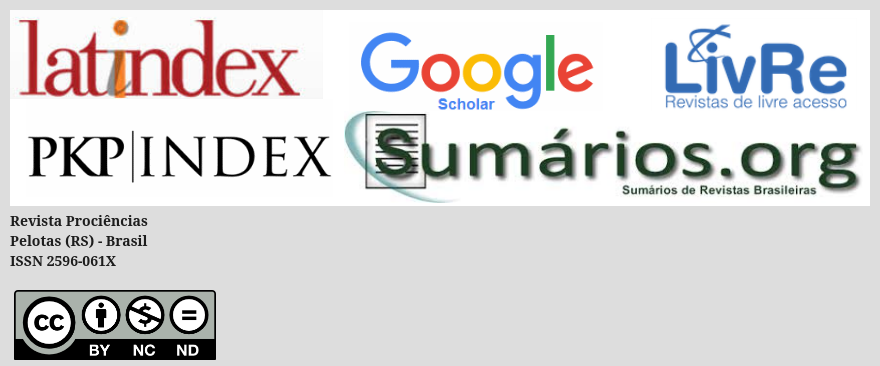MATURITY MODEL AND DECISION MAKING IN THE CONTEXT OF INDUSTRY 4.0 IN THE TOOLING MAKER SECTOR
Abstract
The three industrial revolutions caused changes in production processes, with resulting historical landmarks that are still being analyzed after their events. The fourth industrial revolution, entitled Industry 4.0, is currently researched in industrial contexts. Based on this assumption, this study had two objectives: i) to diagnose and measure the level of maturity of the I4.0 in the toolmakers and ii) to propose a decision-making tool based on such a diagnosis, with the hierarchy of the implementation of technologies that enable the I4.0 for toolmakers. This is a mixed study with interviews involving individuals from ten toolmakers in Caxias do Sul, outlining a study of multiple cases. For the quantitative step, a six-level scale was used to measure and diagnose I4.0 in tooling makers, as well as GUT matrix to hierarchize the priorities of implementation of I4.0 for decision making. Among the main results, we highlight the development of a technological radar of the tools, from the statistical mean identified. For decision-making, five implementation priorities were chosen, which include implementation costs, organization adequacy costs, applied technology, human resources, education and organizational culture. The main priority is the creation of value for tool makers, occurring through vertical integration (integration between different levels of technology and information hierarchies), horizontal (through value networks associating all actors in the value chain) and end-to-end connection.
conexión de extremo a extremo
Downloads
References
ALMEIDA, Júlia Fornaziero de. Adoção de Manufatura Aditiva (MA) para Metais em Empresas: identificação de barreiras e proposta de roteiro para implementação. 2021. Tese de Doutorado. Universidade de São Paulo. Disponivel em:< https://www.teses.usp.br/teses/disponiveis/18/18156/tde-23082021-180414/en.php>. Acesso em: 25, jul. 2022.
BRANQUINHO, T. et al. Segurança Cybernética Industrial: As infraestruturas críticas mundiais correm perigo. Aprenda a proteger redes e sistemas de controle com uma metodologia comprovada na prática. Alta Books, 2022.
CARVALHO, CP de; SENNA, NNB. Planejamento estratégico. Estudo de caso no mercado de farmácia de manipulação. XXXV ENEGEP-Encontro Nacional de Engenharia de Produção. Fortaleza-CE, Brasil, v. 13, 2015.
CRESWELL, J. W.; CRESWELL, J. D. Research design: Qualitative, quantitative, and mixed methods approaches. Sage publications, 2017.
DOS SANTOS, Luiz Carlos. Ferramentaria: A importância de gestão, estratégia e pessoas na construção do futuro. Canal 6 Editora, 2020.
DE AGUIAR, Túllio Vieira. Cadeias globais de valor e desenvolvimento econômico na América Latina Global value chains and economic development in Latin America. Brazilian Journal of Development, v. 8, n. 3, p. 21910-21929, 2022.
FAROOQ, M. Umar et al. A review on internet of things (IoT). International journal of computer applications, v. 113, n. 1, p. 1-7, 2015.
FERREIRA, Angel Rodrigues et al. Revisão da literatura: uso do conceito BIM em projetos do setor elétrico nos cenários (Inter) Nacional. Research, Society and Development, v. 11, n. 6, p. e37211629144-e37211629144, 2022.
FERREIRA JUNIOR, José da Silva; LEANDRO, Francielle da Silva; TEIXEIRA, Caroline Oliveira; ARAÚJO, Talita Nunes de. Avaliação da maturidade das ferramentas lean: estudos de casos múltiplos em indústrias da microrregião de Passos/MG. Exacta, [S. l.], v. 20, n. 1, p. 117–139, 2022.
FIT Tecnologia. (2021). Comparativo das Ferramentarias: Brasil x Alemanha x Portugal x EUA. Disponivel em:https://fit-tecnologia.com.br/comparativo-de-ferramentarias-mundo/. Acesso em: 25, jun. 2022.
GERES, Mauro. A cidade dos moldes: em Joinville, onde se encontra a maior concentração setorial do país, as empresas enfrentam o desafio da atualização tecnológica para serem globalmente competitivas. Indústria e Competitividade, [s. l], v. 1, n. 16, p. 18-25, jul. 2018.
GILCHRIST, A. Introducing Industry 4.0. In: Industry 4.0. Apress, Berkeley, CA, p. 195- 215, 2016
GRIMALDI, Roberto; MANCUSO, José Humberto. Qualidade total. Folha de SP e Sebrae, 6º e 7º fascículos, 1994.
GODOY, Arlida Schmidt. Introdução à pesquisa qualitativa e suas possibilidades. Revista de administração de empresas, v. 35, p. 57-63, 1995.
HAJI, L. et al., Impact of cloud computing and internet of things on the future internet. Technology Reports of Kansai University, v. 62, n. 5, p. 2179-2190, 2020
IEDI. (2020) Indústria 4.0: A Política Industrial da Alemanha para o futuro. Disponível em:
JUNIOR, Roberto Bernardes et al. Indústria 4.0: alcançou a exaustão, ou ainda há espaço para novos desdobramentos? Revista Ibero-Americana de Humanidades, Ciências e Educação, v. 9, n. 6, p. 2527-2542, 2023.
KANG, H. S.; LEE, J. Y.; CHOI, S.; KIM, H.; PARK, J. H.; SON, J. Y.; DO NOH, S. Smart manufacturing: Past research, present findings, and future directions. International journal of precision engineering and manufacturing-green technology, v. 3, n. 1, p. 111-128, 2016.
KALB, Christiane Heloisa; CARELLI, Mariluci Neis. Narrativas sobre o patrimônio industrial: ferramentarias de moldes e matrizes em Joinville/SC. História: Questões & Debates. v. 62, n. 1, p. 193-218, jul. 2015.
KAGERMANN, H.; WAHLSTER, W.; HELBIG, J. Recommendations for implementing the strategic initiative INDUSTRIE 4.0: securing the future of German manufacturing industry. [S.l.]: National Academy of Science and Engineering, 2013.
KIRNER, Claudio; KIRNER, Tereza Gonçalves. Evolução e tendências da Realidade Virtual e da Realidade Aumentada. Realidade Virtual e Aumentada: Aplicações e Tendências. Cap, v. 1, p. 10-25, 2011.
LI, Ming et al. Blockchain-based digital twin sharing platform for reconfigurable socialized manufacturing resource integration. International Journal of Production Economics, v. 240, p. 108223, 2021.
PROVENZA, Francesco. Moldes de injeção. São Paulo: Pro-tec, 1993.
PINTO, Elaine de Oliveira et al. A preliminary study of environmental risks through the gut matrix: application in an industrial kitchen. Food Science and Technology, v. 42, 2022.
QUEIROZ, Rafael Machado; PORTELA, Clara Fagundes. Uma análise estratégica da interseção entre a metodologia EVA (Economic Value Added) e cadeia de valor: revisão bibliográfica. REGEN Revista de Gestão, Economia e Negócios, v. 2, n. 1, 2021.
RICHARDSON, Roberto Jarry. Pesquisa social: métodos e técnicas. São Paulo: Atlas,
1989.
RODRIGUES, Luciene Cavalcanti; DE QUEIROGA, Ana Paula Garrido; MILHOSSI, José Fernando. Indústria 4.0 e a transformação digital Industry 4.0 and digital transformation. Brazilian Journal of Development, v. 8, n. 2, p. 14093-14101, 2022.
SACOMANO, José Benedito et al. Indústria 4.0. Editora Blucher, 2018.
SAUNDERS, Benjamin et al. Saturation in qualitative research: exploring its conceptualization and operationalization. Quality & quantity, v. 52, p. 1893-1907, 2018.
. v. 1, p. 169-211.
SCHUH, G et al. Collaboration Mechanisms to increase Productivity in the Context of Industrie 4.0. Procedia Cirp, v. 19, p. 51-56, 2014
SHENEIDER, Jaime. Medição do nível de maturidade do uso de tecnologia em um ambiente da indústria 4.0. 2019. 116 f. Dissertação (Mestrado Profissional em Engenharia de Produção) – Universidade de Caxias do Sul. Caxias do Sul, 2019. Disponível em:< https://repositorio.ucs.br/xmlui/handle/11338/4877>. Acesso em: 25 jun. 2022.
VÖLZ, Vanderson Kruschardt et al. Avaliação de maturidade da Indústria 4.0 em uma empresa fabricante de produtos eletromédicos. VETOR-Revista de Ciências Exatas e Engenharias, v. 33, n. 1, p. 80-96, 2023.
YIN, R. K. Pesquisa qualitativa do início ao fim. Tradução: Daniel Bueno. Porto Alegre: Penso, 2016.


